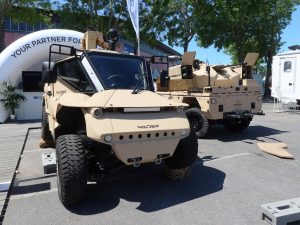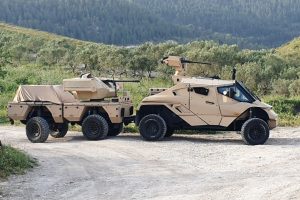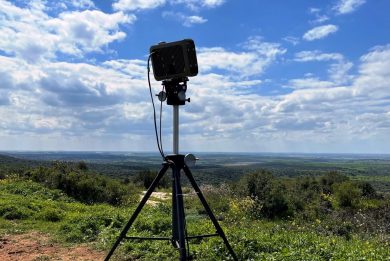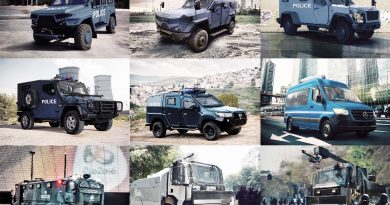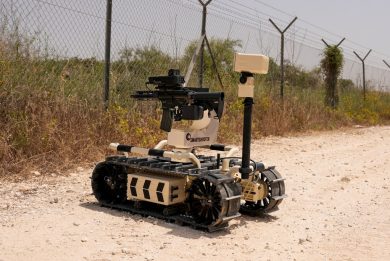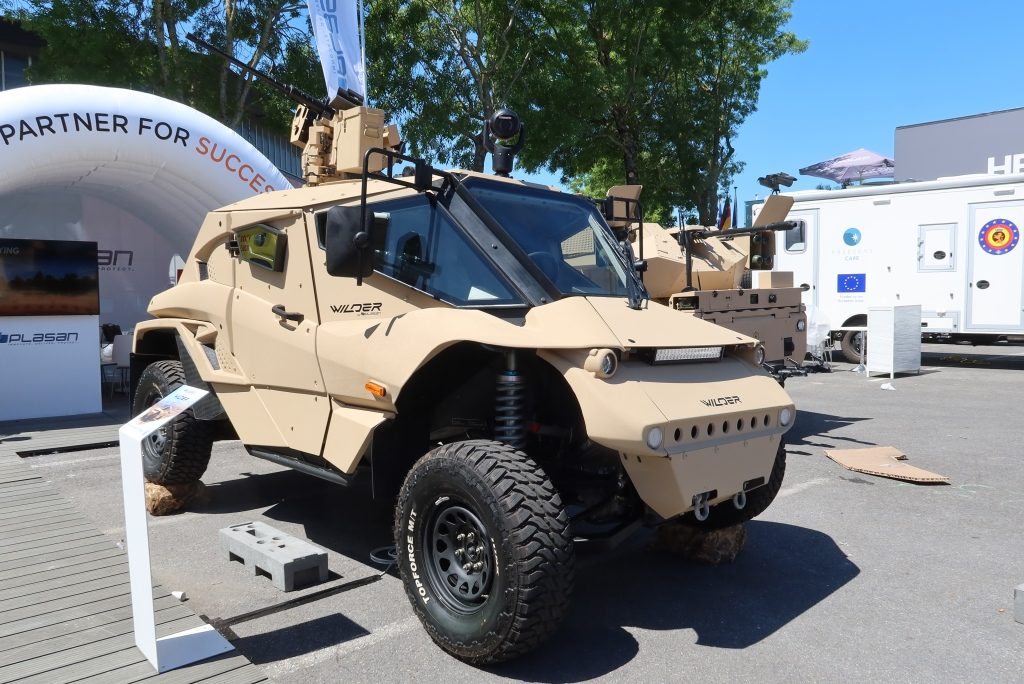
Plasan Wilder, a true light armoured 4×4
With the term “light” becoming quite anachronistic in many armoured vehicles definition, the “light” boundary having moved well close or beyond the 10 tonnes mark, Plasan of Israel brought back that word to its reality, with a new vehicle which GVW is limited to 4.5 tonnes. “We wanted to go back to jeep World War II dimensions but adding armour,” Nir Kahn, Director of Design at Plasan confirms to EDR On-Line.
Named Wilder, the new vehicle is being unveiled at Eurosatory. Compact, 4.39 meters long, 1.934 meters wide and 2.093 meters high, with a 335 mm ground clearance and a 3.2 meters wheelbase, it can carry four military; for comparison an M1551A1 HMMWV is 4.93 meters long and 2.31 meters wide, not to mention more recent vehicles which design priority was protection.
A monocoque chassis, with a sub-frame front and rear and patented Rego Rex axles, it is fitted with independent suspension with coil over shock absorber, and with roll bar front and rear. The Wilder is powered by a Cummins R2.8 Euro 3 Turbodiesel engine, which is located at the centre in the lowest possible position, which allows obtaining a very low centre of gravity, a plus in terms of stability, and moreover ensures optimal weight distribution on the two axles. The engine provides a 161 hp output with a maximum torque of 420 Nm at 1,800 rpm, it is coupled to a ZF 8-speed automatic gearbox, the Wilder reaching 120 km/h, speed having been purposely limited for safety reasons. The powertrain drives the 4×4 through centre, front and rear differential locks electrically operated; “these differentials are mounted in a peculiar way in order to have longer shafts and therefore a longer wheel travel for the same angle, up to 320 mm, a considerable result on a pretty narrow vehicle, the Wilder being less than 2 meters wide,” Nir Kahn explains. The new Plasan vehicle is provided as standard with the front power-steering axle, and in that configuration the turning circle diameter is of 15 meters; however as option the company is ready to fit it with a rear steering axle, which would lower the turning circle diameter to 10 meters. With a 36 hp/t power-to-weight ratio, it is equipped with 285/70R17 wheels and tires, Plasan declaring that “the Wilder has the mobility and off-road capability of a racing buggy.” With the wheels pretty close to the extremities, it has a 50° approach angle and a 70° departure angle. The Wilder can overcome an 80% slope, drive on a 54% side slope thanks to the very low CG, cross a 600 mm wide trench, overcome a 400 mm high step, and ford up to 600 mm. The 95 litres fuel tank ensures a 700 km operational range at standard mission profile.
The driver is seated at the front-centre and has a 180° visibility, the other three crew members being seated behind him, the two side ones slightly ahead of the rear central passenger with good side visibility through the windscreen and the doors transparents. Access takes place by two rear-hinged side doors; “the internal layout ensures optimal accessibility with only two doors, which allows increasing protection wile reducing weight,” the company Director of Design explains. The crew is protected by the advanced composite light armoured cell exploiting Plasan’s Kitted Hull modular armour technology, a weld-free solution where armour panels are assembled with bolts. The Wilder can be provided with different protection levels, B6, according to EN1522, or Level 1 or 2 according to STANAG 4569. antimine protection being at Level 1. The overall payload for the Level 2 version is 800 kg, which eaves around 300 kg to add further armour or systems once considered the four-man crew. One of those can be a light RCWS, the vehicle on show being fitted with a Rafael Mini-Samson; the control console is installed at the centre rear, the soldier sitting in the middle in the rear row being the one who manages the weapon station. At Eurosatory the RCWS is shown as a fixed mount, however Plasan has already developed a configuration where the mount can be lowered on the rear flatbed to ensure full air transportability, as the Wilder can be carried into CH53 Chinook and C130 Hercules aircraft, respectively two and three vehicles. The flatbed at the rear is 1.3 x 1.3 meters and can transport a standard NATO pallet, which measures 1.2 x 1 meters. Any operational or logistic load that fits onto a NATO pallet can therefore be carried. Plasan already tested a drone launcher, while installing an antitank guided missile is also under consideration, but many other payloads can be can be used, for example an ISR suite. A distinctive feature is the triple tow hook, purposely installed to couple the Wilder with the ATeMM, the All-Terrain electric Mission Module also unveiled in Paris by Plasan.
The Wilder drive-by-wire system and its on-board sensors makes it fit for remote driving; when the vehicle needs to be moved to a vantage point in order to allow its ISR payload to overlook a designated area of interest, the crew can dismount and send the vehicle ahead by itself, without putting their lives at stake. Adding autonomous capabilities might be the next step.
“The Wilder was nearly ready two years ago, but the cancellation of most exhibitions due to the pandemic allowed our company to push forward the development, so we decided to present it at Eurosatory 2022 as a much more mature proposal,” Nir Kahn concludes. Designed to cost, and aiming at providing the user with performances usually given by heavier and more expensive platforms, a number of interested customers have already surfaced, the vehicle being currently considered at TRL 7/8. The Wilder is far from being a vehicle dedicated to Special Forces, its protection level, its mobility and its size make it suitable for short-range patrol, reconnaissance, operations in urban terrain, and others. Plasan already foresees further evolutions, the Wilder being by design capable to accept in the future a hybrid powerpack, but this is not for tomorrow.
Photos courtesy Plasan and P. Valpolini


